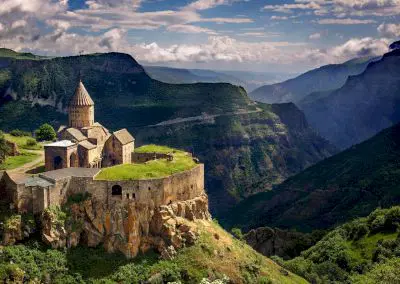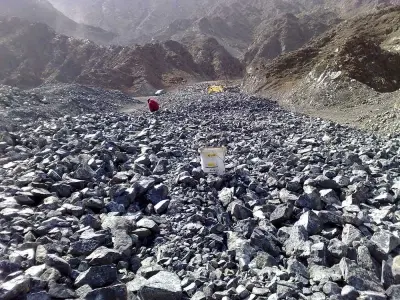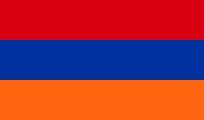Minerals Prices in Armenia
Armenia is a powerful country in terms of industry and income. Scientists have identified over 4000 minerals of the earth's crust. Armenia's most important trading partners in terms of exports are Russia, Switzerland, Bulgaria, Iraq, the Netherlands, China (4.50%) and Iran. Substances that are formed based on natural processes are called minerals. The people of Armenia in general have a very similar culture to Iranians. Minerals can be identified by their physical properties, such as hardness, color, appearance (luster) and odor
Add your import and export orders to this list
Warning: Undefined variable $formTitle in /home/anbar/domains/anbar.asia/anbar/inc/html/desktop/orderform.php on line 10
Warning: Undefined variable $marketName in /home/anbar/domains/anbar.asia/anbar/inc/html/desktop/orderform.php on line 12
Warning: Undefined variable $location in /home/anbar/domains/anbar.asia/anbar/inc/html/desktop/orderform.php on line 12
If you want to trade in the , please join in Anbar Asia. Your order will be shown here, so the traders of contact you

Armenia in industry, tourism, services, agriculture experienced great prosperity. Some minerals can be detected by a little more features than the naked eye. Iran plays a more active role in Armenia's imports. Providing quality material has a huge impact on your reputation as a trader
- Armenia Sphalerite Market
- Armenia Galena Market
- Armenia Coal Market
- Armenia bauxite Market
- Armenia Chromite Market
- Armenia Hematite Market
- Armenia Chalcopyrite Market
- Armenia Cassitrite Market

Due to its mountainous texture, Armenia has long been a place for the extraction of various minerals. For this reason, different types of mines are active in it. The most important of these mines in Armenia are gold, iron, copper, salt and some other minerals.
Read More ...
Chromite is found as stone in nature. This stone is also known as chromite and contains chromium oxide with the formula FeCr2O4. Chromite occurs in mineral deposits and veins and may be found in the ground as small particles or larger deposits. Accumulations of chromite are found in some regions of the world including South Africa, Albania, Kazakhstan, Turkey and India.
Read More ...Sep 19, 2014 · Pragnesh Shah examines a stone in the 'rough department' at Dimotech, Armenia's second largest factory. Dimotech employs 150 diamond workers at its facility in the village of Nor Hatchn, the hub of Armenia's diamond operations. Many of the diamonds that are refined in Armenia originate from Russian mines. Sep 19, 2014 · Pragnesh Shah examines a stone in the 'rough department' at Dimotech, Armenia's second largest factory. Dimotech employs 150 diamond workers at its facility in the village of Nor Hatchn, the hub of Armenia's diamond operations. Many of the diamonds that are refined in Armenia originate from Russian mines. Lydian was trying to progress its stalled, 75%-complete Amulsar gold project in Armenia but had been blocked from site for more than two years. Nov 15, 2020 · Armenia won a war over the territory in the early 1990s that killed some 20,000 people and displaced a million, mostly Azerbaijanis. Apr 11, 2018 · PanARMENIAN Multi Group Concern and the Swiss company Omnia Tech will create the world's biggest mining farm in Armenia. Also, the companies seek to make Armenia a financial tech hub by developing new programs based []. In Armenia, there are many tuff deposits from where highly decorative stones are mined with a palette of colors from light to black. After 22 years, the shaky Armenian-Azeri ceasefire in the region fell apart overnight on April 2 with both sides of the front using mortars, artillery, armored vehicles, battle tanks and multiple rocket launchers. Oct 22, 2020 · The region's poorest country, Armenia, is also sidelined from all the major energy and transit projects in the Caucasus region, noted Azerbaijani economist and opposition leader Natig Jafarli. During Soviet rule, Armenia began to develop and concentrate on computer-based high technology, alongside a manufacturing sphere, the production of brandy, heavy industry, and mining. factories in Armenia, Ukraine, India, Israel and elsewhere challenges the De Beers Central Selling Organization. 0848 Azerbaijanis hit Armenian cars with stones in Artsakh (PHOTOS) 2349 US and UK impose sanctions on conglomerates controlled by military of Myanmar 2348 Armenia Supreme Judicial Council holding urgent session, judge says his life is being threatened 2345 Biden It will be hard for US to pull its troops out of Afghanistan before May 1 2338 Biden says he plans to run in 2024 presidential . Weather forecast in Armenia 5-Day Weather Forecast (25. 23/03/2021 1705 Armenia's president, PM meet, discuss situation in the country 23/03/2021 1620 Homeland Salvation Movement opens Baghramyan Avenue, to organize rally on Sunday to present future actions 23/03/2021 1603 Discussion of Electoral Code amendments in pre-electoral period inexpedient PAP deputy 23/03/2021 1549 Armenian, Russian DMs discuss Syunik issue during phone talk 23 . Nov 15, 2020 · Armenia won a war over the territory in the early 1990s that killed some 20,000 people and displaced a million, mostly Azerbaijanis. United States, Chile, Peru, Mexico, Canada, Armenia, Iran, Russia and Mongolia. Dec 07, 2020 · Georgia and Armenia Group Tour 2021. Explore ancient fortresses, castles, fine traditional drinks and delicious cuisine with 12 day Georgia and Armenia group tour. Biggest mining farm opened in Armenia. Multi Group Concern actually has a mining company mining blocks of stone and minerals LOL (source wikipedia on Multi group stone).
Read More ...
Table: Mining Sector in Armenia, unit: Thousand U. In 2017, Armenia became the 52nd country to join the EITI - Extractive Industries Transparency Initiative as a candidate country. Overall, exports of minerals accounted for around 25% of the country’s export revenue. Armenia’s main export partners were Russia and China. More than 90 percent of Armenia’s imports of mineral products consist of natural gas and petroleum. 497 licenses were provided for the of mineral resources, including 27 licenses for metallic minerals, 442 for non-metallic minerals and 29 for underground mineral waters. Among base metal and precious metal deposits located in Armenia, there are 8 mines, 3 copper mines, 13 gold and mines, 2 poly metal lie mines, 2 iron ore mines, 1 aluminum and 1 magnesium silicate and chromite rock mines. Besides metals, Armenia produces other industrial minerals, which include cement, diatomite, gypsum, limestone, and perlite. Armenia also has indigenous construction material resources, such as basalt, granite, limestone, marble, and tuff. Armenia has both semiprecious stones, such as agate, jasper, and obsidian and other nonmetallic minerals, such as bentonite, diatomite, perlite, and zeolites. Around 90 percent of Armenian’s natural gas is imported from Russia. Since 2006, Armenia has also imported natural gas from Iran through a direct pipeline between the two countries, in addition to liquefied natural gas (LNG) transported in tanker trucks. Armenia has significant deposits of copper, molybdenum and gold, as well as smaller deposits of zinc, lead and silver. Armenia also has significant deposits of construction materials, such as granite, basalt, travertine, gypsum, diatomaceous earth, limestone and raw materials for cement production. The total value of metal and minerals production in 2017 increased by 13. The resources of the most high quality and of the greatest amount of swelling rocks (perlites, obsidians, other) in the world exist in Armenia. Armenia has confirmed reserves of 150 million m3 with possible additional unconfirmed reserves of up to 3 billion m3. The leading producer of copper and molybdenum concentrates in Armenia is the Zangezur complex (ZCMC) followed by the Vallex Grup and the Agarak mining and processing complex (ACMC). Armenia is likely to continue developing facilities for processing copper, gold, and molybdenum. Some Armenians, however, are beginning to voice concerns about the potential effects of mining projects, and companies’ environmental practices are coming under increased scrutiny. The success of mining and mineral processing projects in Armenia, generally, will depend on the ability of the Government to provide a solid legal basis for reconciling the often contradictory goals of economic development and environmental protection. There are 21 tailings in Armenia built to store the left over materials of the mining industry: 11 in the Syunik Province, 7 in the Lori Province, 2 in the Aragatsotn Province, 1 in the Ararat Province. Other opportunities for investors exist in deposits of industrial minerals, including stone and mineral-water resources, for which both domestic and regional markets exist, with a number of currently untapped sources. Armenia was the largest producer of perlite in the former Soviet Union. Ministry of Energy Infrastructure and Natural Resources of the Republic of of Nature Protection of the Republic of of Economic Development and Investment of the Republic of in Foundation of Armenia.
Read More ...
Armenia’s mining sector is a key contributor to the national economy. Ore concentrates and metals accounted for just over half of exports in last years, solidifying their status as the most important export products. More than 670 mines of solid minerals, including 30 metal mines, with confirmed resources are currently registered in the state inventory of mineral resources. Republic of Armenia is rich in iron, copper, molybdenum, lead, zinc, gold, silver, antimony, aluminium, as well as in scarce and scattered metals enclosed therein. Among metal minerals there are 7 mines, 4 copper mines, 14 gold and mines, 2 polymetallic mine, 2 iron ore mines and 1 aluminium mine. In addition to mines estimated and registered in the state inventory, 115 deposits of various metals have been discovered in the territory of the Republic of Armenia. Currently, a final product for the mining and smelting industry in Armenia is mainly considered the concentrates (with high concentration of copper, molybdenum, zinc, and in some cases gold and silver, in the nearest future also lead), which does not enable full use of the economic potential of the mines. Organization, in closed and complete cycles (from extraction to creation of a final product), of processing of metal minerals extracted in Armenia will provide opportunity to make high value products, which in its turn will ensure the GDP growth. Currently, the production waste generated as a result of extraction and processing of minerals accumulated in tailings is not utilized, though they contain a great amount of polymetals. The Republic of Armenia takes a lead in the world with abundance and diversity of non-metallic minerals. Mountainous rocks formed as a result of volcanic processes in the territory of Armenia are of special value and significance, the most important of which are light rocks (tufa, perlite, pumice-stone, zeolite, scoria, etc. The resources of the most high quality and of the greatest amount of swelling rocks (perlites, obsidians, other) in the world exist in Armenia. The confirmed resources of existing in Armenia amount to 150 million m3, whereas the total amount of projected resources reaches up to 3 billion m3. More than 100 basalt, andesite mines are mapped in the entire territory of Armenia, some of which are unique in their composition (the content of Mg-O in basalt Khaladj mineral amounts to 11%). The mines of quartzite, carbonate, zeolite, scoria and pumice-stone, clay, bentonite, diatomite, gypsum, operating on the territory of Armenia, with their rich resources are invaluable with their significance and qualitative indicators.
Read More ...
Table: Mining Sector in Armenia, unit: Thousand U. In 2017, Armenia became the 52nd country to join the EITI - Extractive Industries Transparency Initiative as a candidate country. Overall, exports of minerals accounted for around 25% of the country’s export revenue. Armenia’s main export partners were Russia and China. More than 90 percent of Armenia’s imports of mineral products consist of natural gas and petroleum. 497 licenses were provided for the of mineral resources, including 27 licenses for metallic minerals, 442 for non-metallic minerals and 29 for underground mineral waters. Among base metal and precious metal deposits located in Armenia, there are 8 mines, 3 copper mines, 13 gold and mines, 2 poly metal lie mines, 2 iron ore mines, 1 aluminum and 1 magnesium silicate and chromite rock mines. Besides metals, Armenia produces other industrial minerals, which include cement, diatomite, gypsum, limestone, and perlite. Armenia also has indigenous construction material resources, such as basalt, granite, limestone, marble, and tuff. Armenia has both semiprecious stones, such as agate, jasper, and obsidian and other nonmetallic minerals, such as bentonite, diatomite, perlite, and zeolites. Around 90 percent of Armenian’s natural gas is imported from Russia. Since 2006, Armenia has also imported natural gas from Iran through a direct pipeline between the two countries, in addition to liquefied natural gas (LNG) transported in tanker trucks. Armenia has significant deposits of copper, molybdenum and gold, as well as smaller deposits of zinc, lead and silver. Armenia also has significant deposits of construction materials, such as granite, basalt, travertine, gypsum, diatomaceous earth, limestone and raw materials for cement production. The total value of metal and minerals production in 2017 increased by 13. The resources of the most high quality and of the greatest amount of swelling rocks (perlites, obsidians, other) in the world exist in Armenia. Armenia has confirmed reserves of 150 million m3 with possible additional unconfirmed reserves of up to 3 billion m3. The leading producer of copper and molybdenum concentrates in Armenia is the Zangezur complex (ZCMC) followed by the Vallex Grup and the Agarak mining and processing complex (ACMC). Armenia is likely to continue developing facilities for processing copper, gold, and molybdenum. Some Armenians, however, are beginning to voice concerns about the potential effects of mining projects, and companies’ environmental practices are coming under increased scrutiny. The success of mining and mineral processing projects in Armenia, generally, will depend on the ability of the Government to provide a solid legal basis for reconciling the often contradictory goals of economic development and environmental protection. There are 21 tailings in Armenia built to store the left over materials of the mining industry: 11 in the Syunik Province, 7 in the Lori Province, 2 in the Aragatsotn Province, 1 in the Ararat Province. Other opportunities for investors exist in deposits of industrial minerals, including stone and mineral-water resources, for which both domestic and regional markets exist, with a number of currently untapped sources. Armenia was the largest producer of perlite in the former Soviet Union. Ministry of Energy Infrastructure and Natural Resources of the Republic of of Nature Protection of the Republic of of Economic Development and Investment of the Republic of in Foundation of Armenia.
Read More ...
https://www.peopleofar.com/2014/02/22/the-blue-stones-of-aratta/
https://www.kopernik.waw.pl/mining_stone_in_armenia-7420.html

